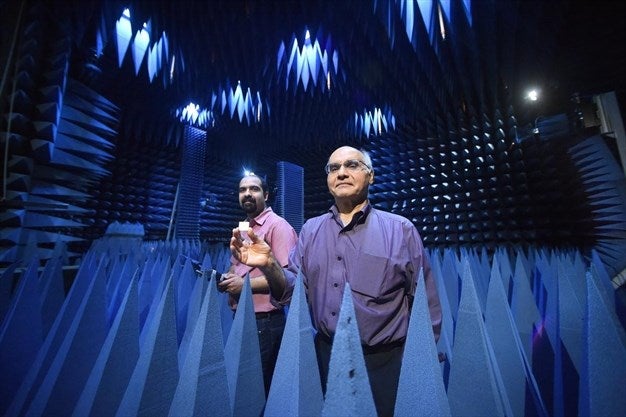Anechoic chamber is free from noise and electronic interference, leading to new scientific breakthroughs in Waterloo

WATERLOO — The heavy steel door inside Room 1018 of the Engineering 5 building at the University of Waterloo looks more like a bank vault than the entrance to a laboratory.
When you step inside, however, the outside world just melts away. The background noise of automobile traffic, air conditioners, birds and even the wind in the trees is silenced. This is the anechoic chamber at UW, a $15 million research lab and the quietest spot in Waterloo Region.
Noise and electromagnetic interference cannot exist in this space, thanks to the specially-designed walls and the spongy blue polyurethane spikes that line every inch of the room.
Anechoic means "free from echo," and according to scientific instrumentation the room goes on for infinity and mimics the vacuum of space.
"This lab is almost like the space between stars. There's no interference. No noise," said Safieddin Safavi-Naeini, of UW's department of electrical and computer engineering. He is also the director of the lab, known as the Centre for Intelligent Antenna and Radio Systems.
Opened in 2013, the lab is helping researchers and private industry create the next generation of wireless communications devices, vehicular radar for driverless cars, satellite communications, nanosensors and other smart devices.
The chamber helps measure the electromagnetic fields radiated by objects as tiny as a human hair and as large as a two-ton truck, with the highest precision and over the widest range of frequencies possible in any academic facility in the world.
The electromagnetic spectrum includes all the various sources of electromagnetic radiation, including radio waves, microwaves, heat, visible light, ultraviolet light, X-rays and more. Researchers study and analyze electromagnetic fields and how those fields interact with surrounding objects.
They also hope the facility will help them learn more about terahertz, a part of the electromagnetic spectrum between radar and fibre optics that is not fully understood.
Read full story